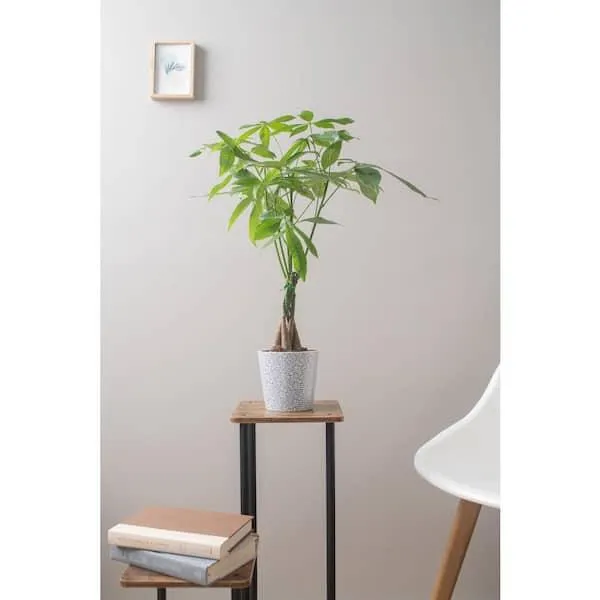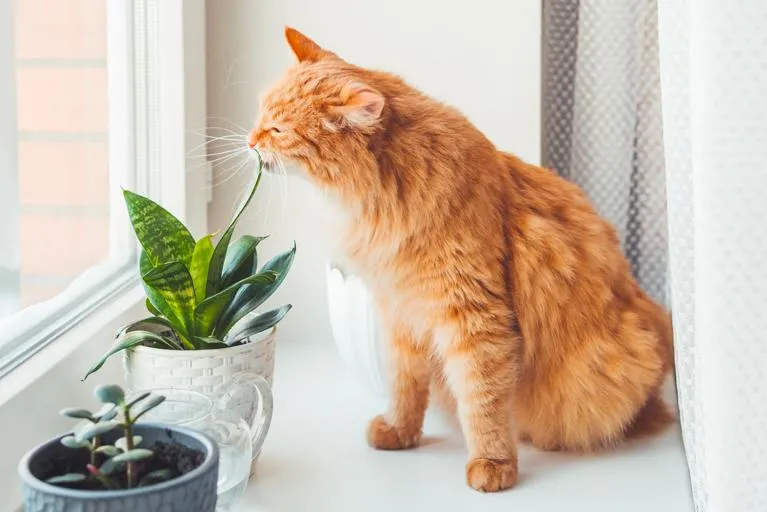Is Pachira aquatica toxic to cats?
As a veterinary nurse, I’m often asked questions about plant toxicity and keeping pets safe. One plant owners frequently wonder about is Pachira aquatica, also known as Malabar chestnut or pennyplant. Let’s take a look at everything we know about this popular houseplant and whether it poses risks to curious kitties.
What is Pachira aquatica?
Pachira aquatica is a large, lush plant native to Central and South America. It’s commonly grown as an indoor foliage or outdoor tropical plant. With its broad, deeply lobed leaves and clusters of round seed pods, it has an exotic tropical appeal. The plant can grow up to 20 feet tall outdoors but is usually kept much shorter as a houseplant. It thrives in medium to bright indirect light and prefers consistently moist soil.
Is it toxic to cats?
According to several references consulted by veterinary toxicologists, all parts of the Pachira aquatica plant are considered mildly toxic to cats if ingested. The seeds may cause more severe issues than other plant materials.
From my experience as a vet nurse, the main risks with Pachira aquatica poisoning in cats include:
- Mild to moderate vomiting and diarrhea
- Depression and lethargy
- Potentially more serious effects like heart issues from large seed ingestions
Fortunately, most cases of cats eating small amounts of this plant result in only mild, self-limiting gastrointestinal upset. But it’s always best to err on the side of caution with potentially toxic houseplants and pets.

Personal experience
I once had a client whose cat, Mittens, got into their large Pachira aquatica plant while they were out. When they returned, Mittens had chewed several large leaves and seed pods. Within an hour, the cat started vomiting. After several rounds of vomiting over the next day, Mittens seemed to recover with just home care and monitoring. It was a scare but, luckily, the cat was okay in the end.
This real-life example shows how even ingesting a moderate amount can cause vomiting in cats. While it may not require veterinary treatment in all cases, it’s never a risk worth taking intentionally with an indoor pet. Their small size means it doesn’t take much plant material to get sick.
Best practices for pet safety
So in summary, while Pachira aquatica toxicity in cats is typically mild, it’s still a plant best kept out of reach of pets. Here are some tips:
- Don’t let cats chew on or eat any part of the plant.
- Grow your Pachira aquatica in an high location like a bookshelf, not on lower tables.
- Consider potting the plant in an inedible container like plastic rather than one a cat may bite.
- Monitor kitties closely if you have indoor plants and intervene if they show interest.
- Remove fallen leaves, seeds or trimmings promptly so pets can’t access them later.
With thoughtful precautions, you can still enjoy this lovely tropical houseplant without concern for your furry friend’s safety. An ounce of prevention is worth a pound of cure when it comes to potentially toxic plants and pets.
Should I get rid of my Pachira aquatica plant?
If you already have a Pachira and a cat, it’s not necessarily a situation to panic about. Basically, as long as normal precautions are followed, like keeping it high up away from curious paws, it can coexist peacefully with pets. Removing fallen debris promptly also helps minimize risks.

It’s usually only worth saying goodbye to the plant if, despite your best efforts to cat-proof it, Fluffy still seems obsessed with chewing it. In that case, for the cat’s protection, rehoming the plant may be a good idea. But most kitties are content to ignore it when kept properly out of reach.
Ultimately, the choice is yours based on your specific cat’s behavior traits. With caution, Pachira aquatica can hang around. But your pet’s safety should always come first. Maybe show Fido or Fluffy some affection as a thanks for not chowing down!
Final thoughts
I hope this detailed look at Pachira aquatica toxicity for cats helped address your main concerns. While it poses some risks if ingested, following basic precautions typically allows people to enjoy this lovely houseplant without major worries. Let me know if you have any other questions!
Wishing you and your furry friend’s many happy, healthy and plant-free years together! Stay safe out there.
Is Pachira aquatica toxic to cats?
| Toxicity Level | Symptoms |
|---|---|
| Moderately Toxic | Vomiting, diarrhea, depression, weakness if ingested. |
| Plant Part Most Toxic | Leaves, stems |
| Toxic Dose | Ingestion of several leaves or stems. |
| Time Until Onset of Symptoms | 1-6 hours after ingestion. |
| Potential Treatment | Induce vomiting if large amount ingested. Monitor for 12-24 hours for symptoms. Supportive care if needed. |
| Cat Exposure Risk | Low. Keep plant out of reach of cats. |
FAQ
-
Is pachira aquatica poisonous to cats?
Pachira aquatica, also known as the Malabar chestnut or Chinese money plant, can be sort of toxic to cats if they eat large quantities of it. The stems, leaves, and seeds contain substances that may cause your cat’s stomach to feel upset. Nevertheless, it’s not considered super dangerous unless your cat grabs a big mouthful.

-
What are the signs of pachira aquatica poisoning in cats?
If Fluffy eats some Chinese money plant, you may see vomiting, diarrhea, or lack of appetite within a few hours. At the same time, she could display strange behavior like wandering around aimlessly or appearing drunk. However, the symptoms are usually mild and your cat should recover on its own with no treatment needed. Basically, just monitor her and call the vet if she seems really ill.
-
Is the whole plant poisonous or just parts of it?
Most sources agree that all parts of pachira aquatica – including the leaves, stems, seeds, and roots – contain toxic compounds that can potentially sicken cats. On the other hand, the toxicity may vary between different sections. The seeds in particular seem to be unpleasant if chewed on. Kind of like how some kids think eating apple seeds is a gross dare.
-
How toxic is it compared to other common houseplants?
If we’re talking straight poison levels, pachira aquatica ranks pretty low on the danger scale. Many plants we keep in homes, for instance peace lilies or dieffenbachia, are significantly more toxic to pets than Chinese money plants. So as long as you only have a small pot of it rather than a gigantic bush, the risk is fairly minimal. Does that help put things in perspective compared to truly awful plants for cats like sago palms?
-
What should I do if my cat eats part of a pachira aquatica?
Remain calm – your cat is unlikely to come to serious harm from a small taste of this plant. Keep an eye out for any signs of nausea, diarrhea etc over the next 6 hours but don’t freak out. Quoting some experts, mild symptoms may clear up without treatment. Nevertheless, it’s not a bad idea to phone your vet and describe what happened, just in case. They can advise if it’s an emergency or whether your cat will probably be fine.
-
Can pachira aquatica be safely displayed as a houseplant if I have cats?
As long as it’s kept well out of reach of jumping/climbing felines, a Chinese money plant poses minimal risk in a home with cats. The key is never letting them chew or swallow pieces, of course! Place it high up or behind closed doors if needed. You could also consider less toxic options for pet-friendly decor. But personally, I don’t see the big issue with it as long as cats can’t access it. What do you think – maybe a little houseplant isn’t worth all the stress?

-
Why are some houseplants poisonous to cats and dogs?
